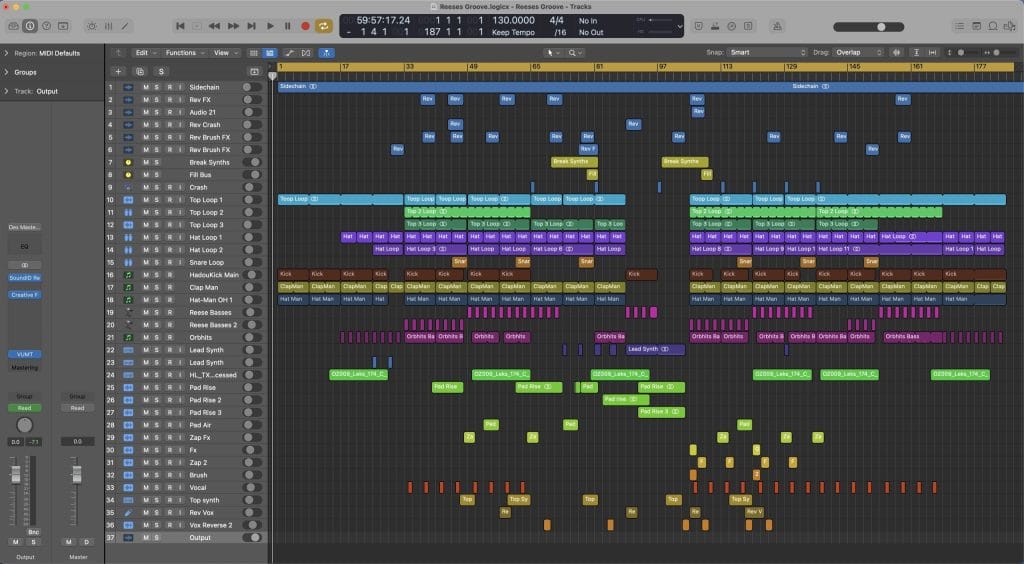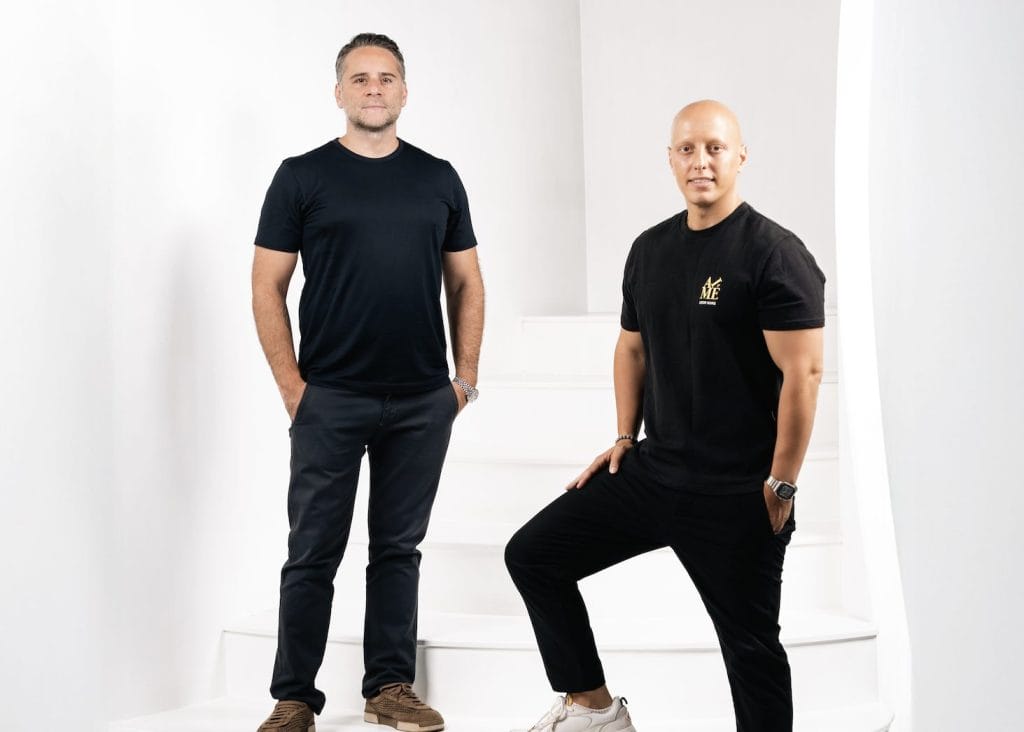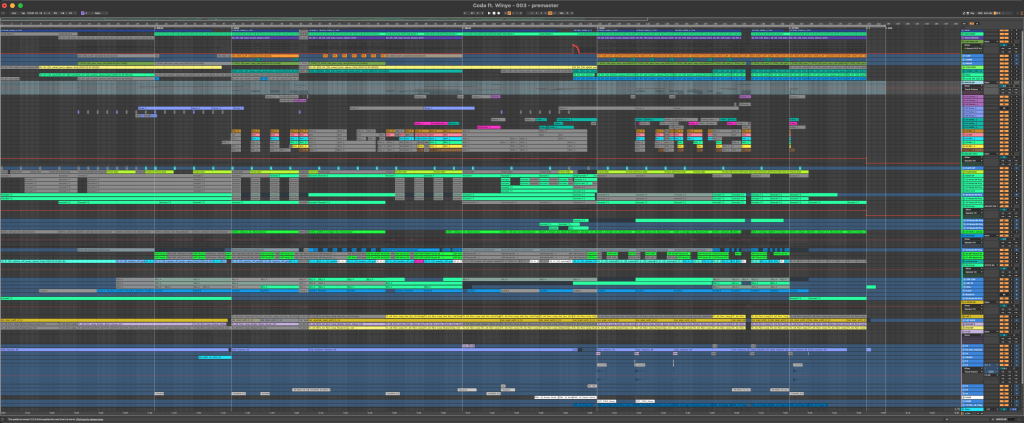Italian-American producer and multi-instrumentalist Tooker steps into a new chapter with “Coda”, released on his freshly launched label and collective SONARA. Known for his genre-crossing background as a former member of KMLN and his years of touring on global stages, Tooker now turns his focus toward deeply hypnotic Afro House with a personal edge.
The track features the powerful voice of Winyo, a celebrated Kenyan singer and songwriter whose performance adds human depth and storytelling to the production. Anchored by driving mid-tempo percussion, atmospheric synth lines, and Winyo’s soulful delivery, “Coda” captures the balance of groove and emotion that defines SONARA’s ethos.
More than a single release, “Coda” also signals the opening statement of SONARA itself, co-founded by Tooker as both a label and a creative community. With upcoming projects blending electronic production, live instrumentation, and mentorship through Sonar Studio in Sardinia, Tooker is creating a home for music that values connection and artistry in equal measure.
You Too Can Produce Where “Coda” Came to Life
All of this comes together at my recording home in Sardinia: Sonar Studio. It’s where I mix every release on our label SONARA, co-produce with other artists, and help visiting musicians finish their albums. Beyond the studio, we also host Sonar Sessions retreats, where producers come from around the world to learn, create, and connect in nature.
This September and October, we’re bringing in mentors such as Sabo, Rodriguez Jr., Ralf Kollmann (founder of Mobilee Records), Maria Die Ruhe, Ruede Hagelstein, and me. Together, we dive into creativity, production, and the deeper process of becoming an artist.If you’re curious, you can find more at SonarStudioSardinia.com — where music, community, and olive trees live side by side.
Softube Model 84 (Juno-106 emulation)
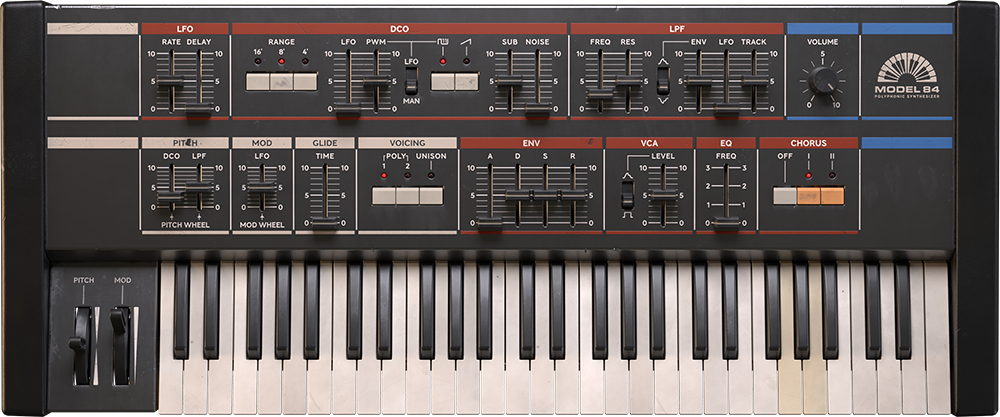
The Model 84 by Softube is like having a Juno-106 from the 80s squeezed into your laptop without the weight, dust, or crazy vintage price tag. It’s warm, creamy, and has that chorus and filter character we all chase when we want emotional, hypnotic lines. It reacts beautifully whether you’re playing bass, pads, arps, or leads, and it’s one of those synths that always seems to sit right in the mix.
In Coda, this synth is the heart of the track. I used a very low cutoff to create a deep, emotional rhythmic hook, then doubled it with the same patch an octave higher, adding more noise to let it shine in the upper frequencies. Each time the melody repeats, I automate the cutoff, resonance, decay, release, and noise — five or six knobs that always move to give it life. Think of it like stirring a risotto: constant attention, constant motion, and every little adjustment adds flavor. That movement transformed a simple hook into something hypnotic and evolving throughout the entire track.
If you’re making Afro House or deep melodic music, use the Model 84 like a secret spice. Layer multiple octaves to build body and shimmer. Don’t just leave a patch static — automate the filter and envelopes so it breathes with the rhythm. Even subtle changes in decay and noise can keep a groove alive without adding a million instruments. And remember, it’s a Juno at heart — it works for everything, from bass to pads to soaring leads.
UAD Space Echo RE-201
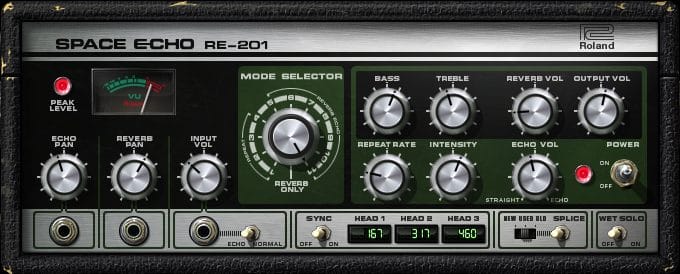
The Space Echo RE-201 is a classic tape delay and spring reverb unit from the 70s, reborn in plugin form by UAD. It’s gritty, warm, unpredictable, and dripping with character. Think of it as the opposite of a clean digital delay — it wobbles, flutters, and feels alive.
I used it in dual mode: reverb on the left, echo on the right. The echo was set to a 1/8th triplet, so it danced perfectly with the groove, while the reverb added depth and space. The combination gave my synths a wide, almost 3D feel, as if they were in dialogue across the stereo field. It’s one of my favorite tricks, and it works not only with VSTs like the Model 84 but also with my hardware synths like the Sub 37 and Minilogue XD.
For Afro House, this is magic. Pan the echo and reverb separately to create width without cluttering the center. Don’t be afraid to embrace the tape wobble and imperfection — it adds groove and humanity. If your track feels too clean, too polite, the RE-201 will mess it up in just the right way.
SPL Transient Designer

The SPL Transient Designer is like having a scalpel for your sounds. It doesn’t compress or EQ; it simply boosts or reduces attack and sustain. It can turn a floppy kick into a punchy one, or stretch out a hi-hat tail into a wash. A super-simple interface, yet super powerful.
I used it to shape percussion and synth plucks so they sat tighter in the groove. Sometimes I shortened the sustain to clean up overlaps, sometimes I boosted the attack to give things more bite. Instead of spending ages chopping transients in Ableton warp mode, this gave me control in seconds. It’s like choosing how long you want a tomato sauce to simmer — a quick reduction for sharpness, or a long simmer for roundness.
Afro House thrives on groove clarity. Use the Transient Designer sparingly to tighten drums without overprocessing, or to push percussive instruments forward in a dense mix. It’s also great for taming reverb-heavy sounds by pulling back the sustain. Think of it as an arrangement in micro — controlling the space between hits so the bigger picture feels clear.
Wavesfactory TrackSpacer

TrackSpacer is like sidechain compression’s smarter cousin. Instead of ducking everything, it carves out only the exact frequencies that clash between two sounds. It works in real-time, with a dynamic EQ style, and even features mid/side mode for precise control.
I used TrackSpacer to manage frequency masking between the kick, bass, synths, and vocals. For instance, when vocals came in, TrackSpacer gently reduced the same midrange frequencies in the pads so the voice could shine. On the low end, it carved space for the kick without flattening the bass. And with the mid/side mode, I maintained stereo sparkle while refining the center. It saved me hours of EQ automation and made the mix flow like a conversation.
In Afro House, where textures are layered and dense, TrackSpacer is a lifesaver. Use it to make your mix breathe instead of piling on EQ cuts. Let the pads duck around vocals, let the percussion loop around each other, and let the bass make room for the kick. The key is subtlety: don’t mute, just whisper “step aside” to the less important sound.
Quick Fire Tips for Afro House Production

- Utility for Volume Automation – Always automate with a Utility, never the mixer fader. Keeps your whole mix flexible if you need to lower everything later.
- Stereo Magic (MicroShift + Cooper Time Cube) – Widen your sounds in style. MicroShift adds shimmer, and the Cooper Time Cube introduces a quirky, organic space that feels alive.
- Soothe & Spiff – Tame harsh resonances and transient spikes instead of fighting EQ battles. Cleaner, faster, better.
- Arrangement is Dialogue – Don’t let every sound talk at once. One rhythm calls, another responds. That’s how you make a track sing.
- Less is More – Don’t keep adding instruments. Automate filters, decays, reverbs. Curate the few sounds you have, and make them tell a story.
The post How It Was Made – Tooker “Coda” (SONARA + Afro House) appeared first on Magnetic Magazine.



